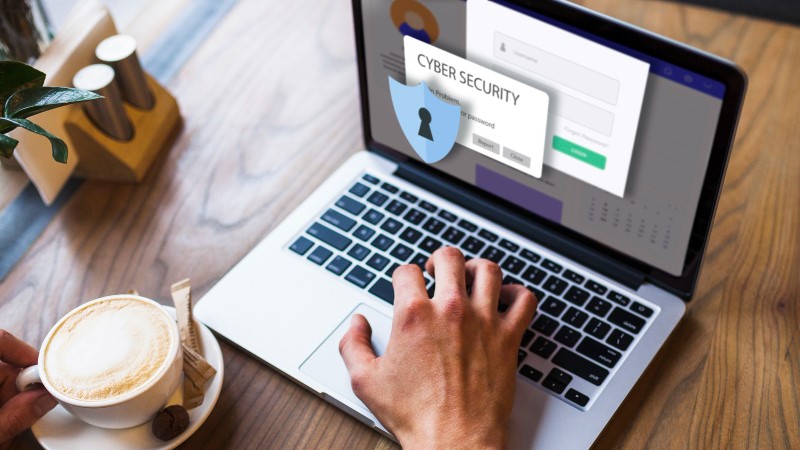
The technique of securing internet-connected systems like servers, computers, mobile gadgets, networks, electronic systems, and data from malicious attacks is renowned as cyber security. Also knowns as IT security solutions, the measures are created to fight risks against networked systems and applications, whether those risks arise from inside or outside of a company.
In the media, cyber security is operated to define the procedure of security against every kind of cybercrime, from recognized theft to international digital pikes. These labels are legal, but they fail to find the real nature of cyber security for those without a computer science degree or experience in the technology sector.
Types of Cyber Security
Every Cybersecurity is a blend of a range of distinct systems. These systems have a robust cybersecurity posture that needs coordinated efforts across all of their systems. Hence, we can classify cybersecurity into the following sub-domains –
Network Security – It includes executing the software and hardware to protect a computer network from unauthorized access, attacks, intruders, misuse, and disruption. This protection aids a company to secure its assets both internally and externally.
Application Security – It includes securing gadgets and software from unnecessary risks. It is one of the IT security solutions that can be completed by continuously updating the applications to make sure they are protected from attacks. Successful protection starts in the design phase, writing source code, risk modeling, validation, and more prior to a program or gadget being deployed.
Data Security – This comprises executing a robust data storage tool to sustain the integrity and security of data, in transit and storage.
Identity Management – This deals with the process of selecting the level of entry that every people has within a company.
Functional Security – This comprises going ahead and making decisions on managing and protecting data assets.
Mobile Security – This is one of the vital IT security solutions that comprises safeguarding both organizational and personal information held on gadgets against different malicious risks. These risks are non-regulated access, gadget loss or theft, virus, and more.
Cloud Security – This comprises securing the data stored in the digital structure for the company. This utilizes different service providers to make sure protection against many risks.
Disaster Recovery – This deals with the procedures, supervision, plans, and alerts to how a company handles malicious activity that results in the failure of functions or information. Its guidelines dictate resuming the lost functions after any disaster occurs to the same functioning capacity as prior to the event.
The Scale of the Cyber Threat
The worldwide cyber threat continues to evolve at a quick speed, with an increasing number of data breaches every year. A report stated that a shocking 7.9 billion records have been revealed by data breaches in the first 9 months of 2019 alone. This measure is almost double the score of records declare a similar duration in 2018.
Medical services, public, and retail units experienced the most breaches, with malicious criminals liable for more incidents. Certain sectors are very attractive to cybercriminals as they gather financial and medical information, but all businesses that utilize networks can stand targeted for client data, customer attacks, and corporate espionage.
Why is Cyber Security Important?
We are living in a digital world where all factors of our lives are based on the network, computers and other electronic gadgets, and software apps. All vital structures like the baking system, financial units, governments, healthcare, and manufacturing sectors utilize gadgets connected to the internet as a major part of their functions.
Certain details, like intellectual property, personal information, and financial data can be vital for non-regulated access or exposure that might have wrong results. This detail provides intruders and risk actors to infiltrate them for financial gain, political, extortion, or social motives, or only vandalism.
Cyberattack is now a global concern that attacks on the system and other protection attacks might endanger the worldwide economy. Hence, this is necessary to have an outstanding cybersecurity method to secure vital details from high-profile protection breaches. Hence, as the volume of cyber-attacks increases, corporations, particularly those that deal with details related to country protection, financial statements, and health, require to utilize robust cybersecurity figures and procedures to secure their vital business and personal details.
Types of Cyber Security Threats
In cybersecurity, a threat is an attempt by a person or company to rob data or be dishonest, get reach a network, or cause general disruption. The cyber community describes the following threats accessible now.
- Malware
The term malware refers to negative software, which is very common attacking equipment. This is utilized by the cybercriminal or hacker to damage or disrupt a system.
- Phishing
Phishing is a kind of cybercrime in which a sender sees it to come from an actual company. They reach a mark through phone, email, or text by sending a link to convince them to click. The link would redirect them to the wrong websites to give sensitive data like personal details, credit card, and baking details, usernames, security numbers, and passwords.
- Man-in-the-middle
This is a kind of cyber threat that involves a cybercriminal blocking a discussion between two people. Once the cybercriminals put themselves in the middle of a two-group interaction, they look like actual participants and can get vital details and return distinct responses. The primary goal of this is to obtain entry to our company or client information.
- Brute Force
It is a type of cryptographic attack that utilizes a step-by-step way to think of all potential blends till the right details are found. Cybercriminals generally utilize this attack to get personal data about targeted passwords, encryption keys, login details, and PINs.
Also Read: What Is VPN? How It Works, Types Of VPN


